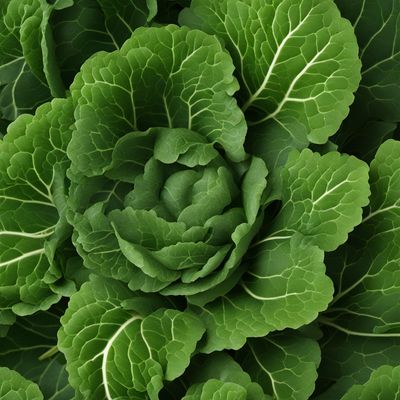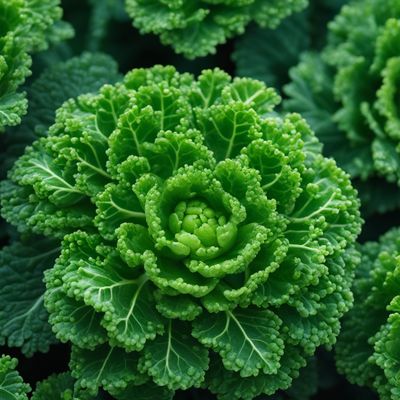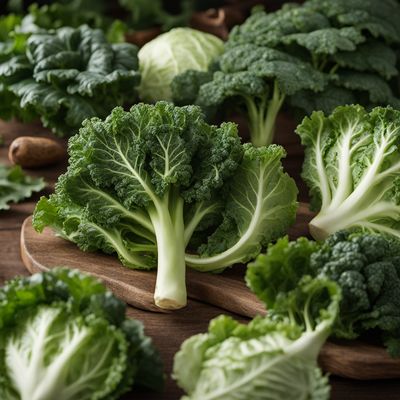
Ingredient
Portuguese kales
The Leafy Green Powerhouse
Portuguese kales have dark green, ruffled leaves with a slightly bitter and earthy flavor. The texture is sturdy and chewy, and the appearance is vibrant and textured. They add depth and complexity to dishes, whether used raw in salads or cooked in soups, stews, or sautés.
Origins and history
Portuguese kales have been cultivated in Portugal for centuries and are an integral part of Portuguese cuisine. They are often used in traditional dishes such as Caldo Verde, a hearty kale soup. Portuguese kales have also gained popularity in other countries for their nutritional value and culinary versatility.
Nutritional information
Portuguese kales are a nutritional powerhouse, rich in vitamins A, C, and K. They also contain minerals such as calcium, iron, and potassium. Additionally, they are low in calories and high in dietary fiber, making them an excellent choice for a balanced diet.
Allergens
There are no known allergens associated with Portuguese kales.
How to select
When selecting Portuguese kales, look for leaves that are vibrant green and free from wilting or yellowing. The leaves should be firm and crisp, without any signs of discoloration or damage. Avoid kales with yellow or brown spots. Opt for organic or locally grown Portuguese kales for the best quality and flavor.
Storage recommendations
To store Portuguese kales, wrap the leaves in a damp paper towel and place them in a plastic bag or airtight container. Store in the refrigerator for up to 5 days. Avoid washing the leaves before storing, as excess moisture can cause them to wilt faster.
How to produce
Portuguese kales can be easily grown in a home garden or container. They thrive in well-drained soil and require regular watering. Sow the seeds in early spring or late summer for optimal growth. Harvest the leaves when they are young and tender for the best flavor and texture.
Preparation tips
Portuguese kales can be used in a variety of culinary preparations. They can be used raw in salads, sautéed with garlic and olive oil, or added to soups, stews, and casseroles. Portuguese kales can also be blanched and used as a filling for savory pies or incorporated into pasta dishes. Additionally, they can be used as a substitute for other leafy greens such as kale or collard greens in recipes.
Culinary uses
Portuguese kales are commonly used in Portuguese cuisine, particularly in dishes such as Caldo Verde, a traditional kale soup. They are also popular in other Mediterranean-inspired recipes, such as salads, pasta dishes, and sautés. Portuguese kales can be found in various international grocery stores and specialty markets.
Availability
Portuguese kales are commonly available in Portugal and other Mediterranean countries. They can also be found in select regions where Portuguese cuisine is prevalent. Additionally, Portuguese kales are cultivated in some parts of the United States, particularly in areas with a significant Portuguese population.




